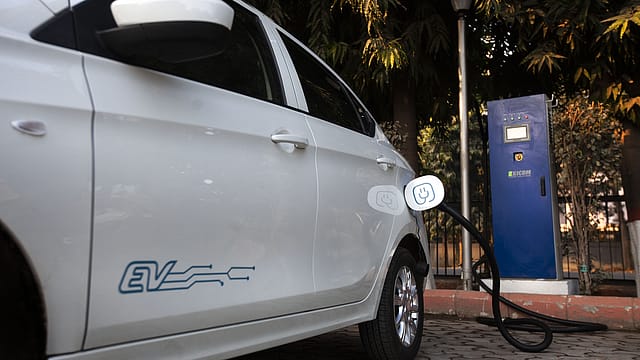EVs to create $100 bn revenue opportunity for India: Bain & Company
ADVERTISEMENT

Electric vehicles will create new revenue and profit pools in India, generating $76 billion-$100 billion of cumulative revenue opportunity and $8 billion-$11 billion of profit across the EV value chain, according to a report by Bain & Company.
The global consultancy expects 35-40% of all vehicles sold in India by 2030 to be EVs, up from 2% in 2022.
The two-wheeler and three-wheeler segments will be the vanguards for EV adoption, achieving 40-45% penetration by 2030, the report says. This, according to Bain & Company, is driven by several factors, including highly competitive total cost of ownership, limited need for public charging infrastructure given the adequacy of home charging for daily use, investments in building compelling product offerings with comparable performance to ICE vehicles, and early adoption by delivery and logistics fleets.
The report, however, adds that four-wheeler passenger vehicles (PVs) will remain behind on the adoption curve. Higher requirements for product performance and build-out of public charging infrastructure, plus higher capital cost and total cost of ownership gaps, serve as barriers to adoption. Even with these challenges, this segment is still expected to achieve 15%–20% market penetration by 2030.
January 2026
Netflix, which has been in India for a decade, has successfully struck a balance between high-class premium content and pricing that attracts a range of customers. Find out how the U.S. streaming giant evolved in India, plus an exclusive interview with CEO Ted Sarandos. Also read about the Best Investments for 2026, and how rising growth and easing inflation will come in handy for finance minister Nirmala Sitharaman as she prepares Budget 2026.
Buses will see a penetration curve similar to that of PVs by 2030, driven in large part by State Transport Undertakings (STUs) focused on fleet electrification for intracity transport—already being pushed by multiple state governments.
While EVs offer significant operating cost savings over internal combustion engine (ICE) vehicles, the high up-front purchase cost has been a significant barrier to adoption. To promote EVs, central and state governments are offering incentives to consumers.
India’s EV industry largely relies on imported battery packs. In an effort to localise large parts of the battery value chain, the government has launched a production-linked incentive (PLI) scheme for advanced chemistry cell battery storage to drive local cell manufacturing.
The gap in capital costs for EVs in India has materially reduced due to a sustained global decline in battery prices until 2021 and continued government subsidies, the report says.
“A high-speed 2W EV vehicle costs only 15%–20% more than its ICE equivalent in Delhi when you factor in FAME and state subsidies. Standalone capital costs are likely to decrease further, assuming an ongoing drop in battery prices (albeit at a slower rate) and increased localisation and scale of manufacturing for vehicles and components, which will eventually make EV capital costs competitive, even in the absence of material subsidies,” says the Bain & Company report.
The price of batteries would need to fall an additional 20-30% to drive price competitiveness with ICE vehicles in the absence of subsidies, the report says.
This electrification-led disruption of the automotive value chain in India is expected to create several opportunities for investors. Several new EV-specific segments such as cell manufacturing and battery packaging, battery management systems, mechatronics, thermal management, telematics, charging and swapping will emerge and scale, the report adds.
